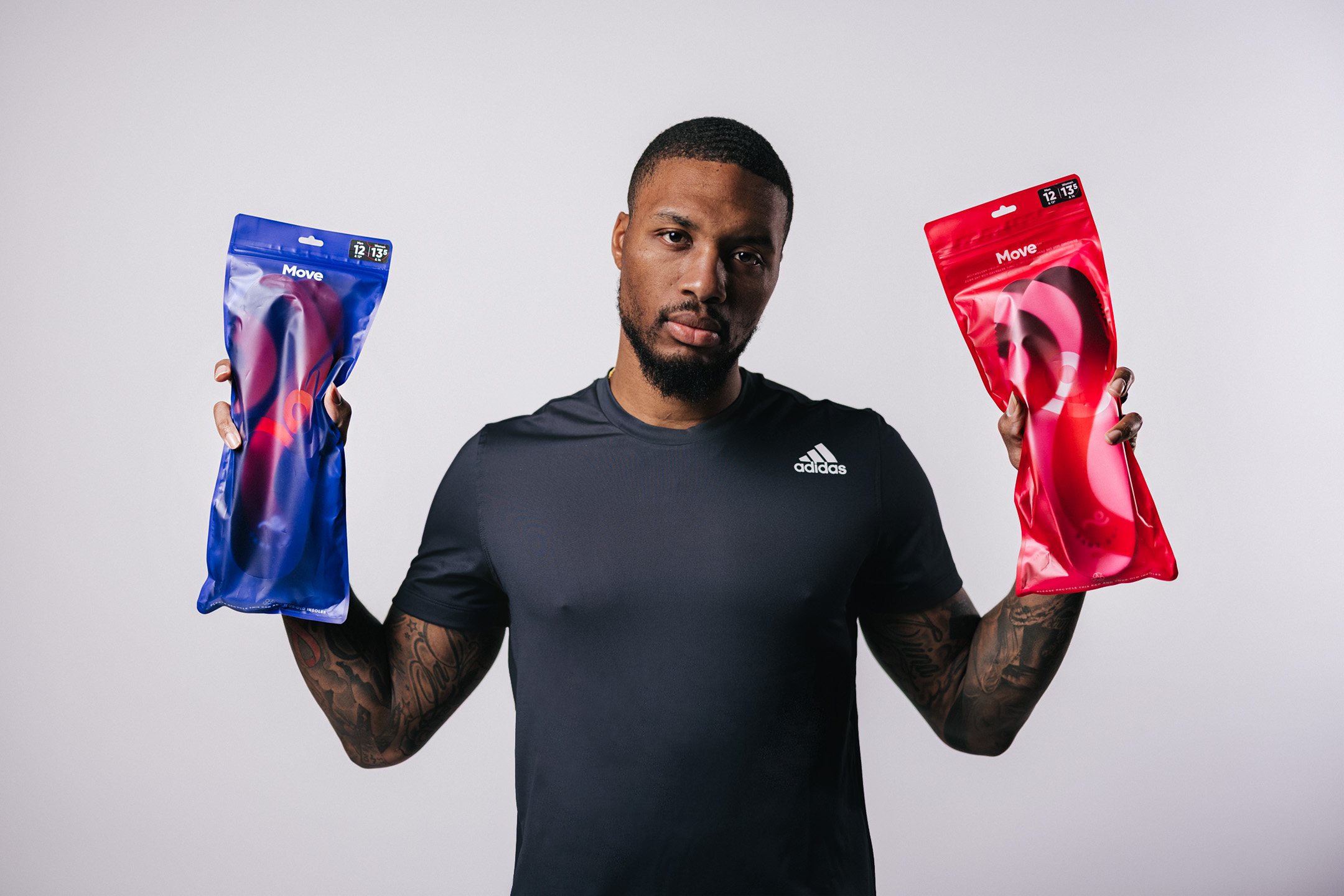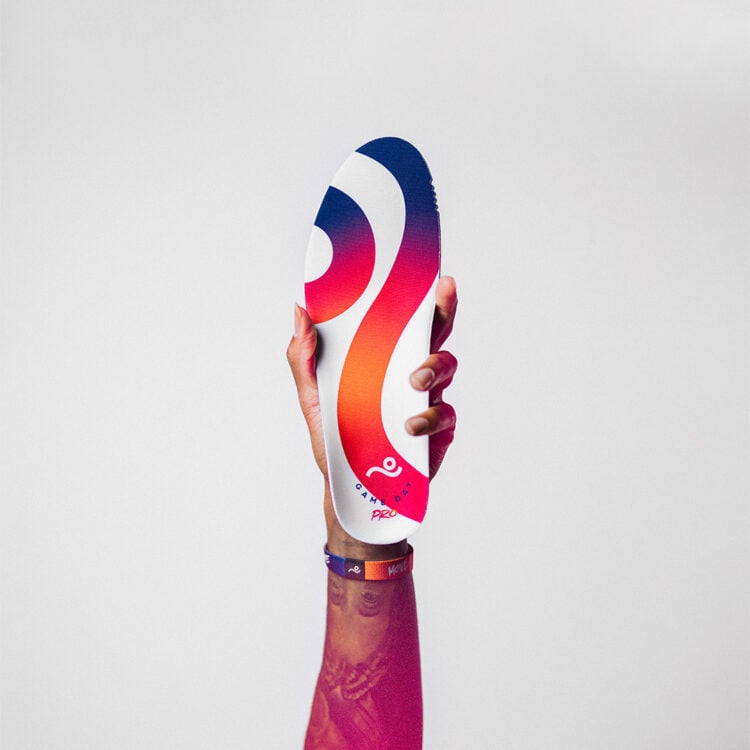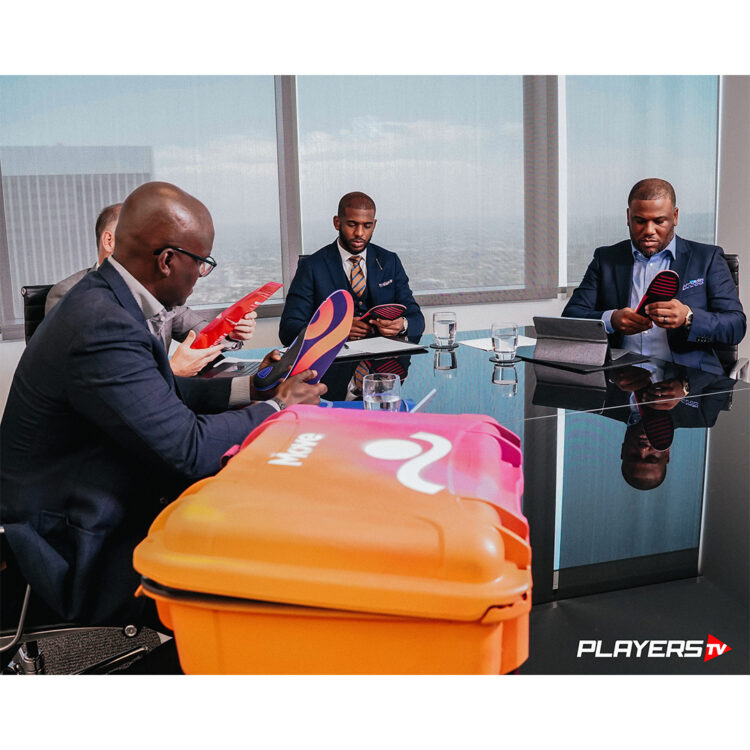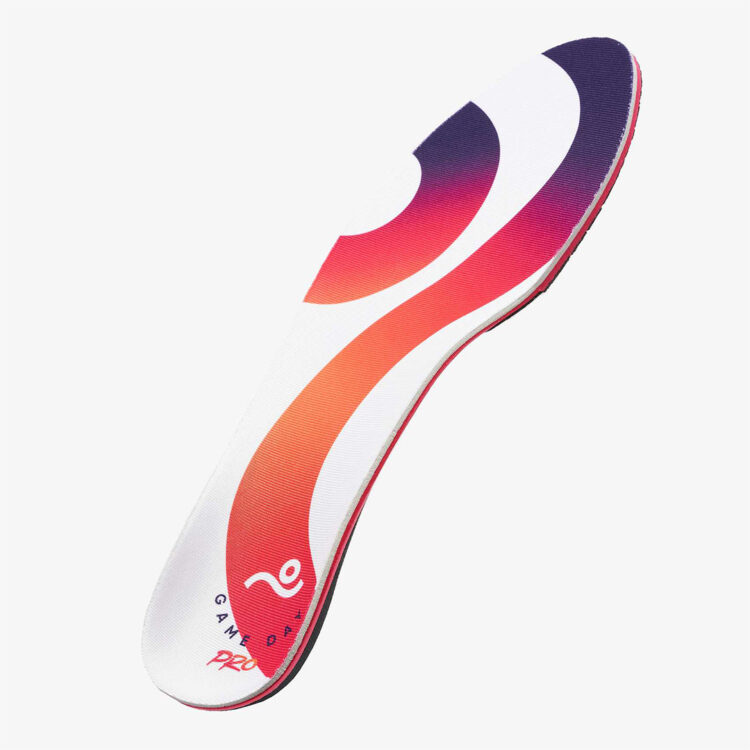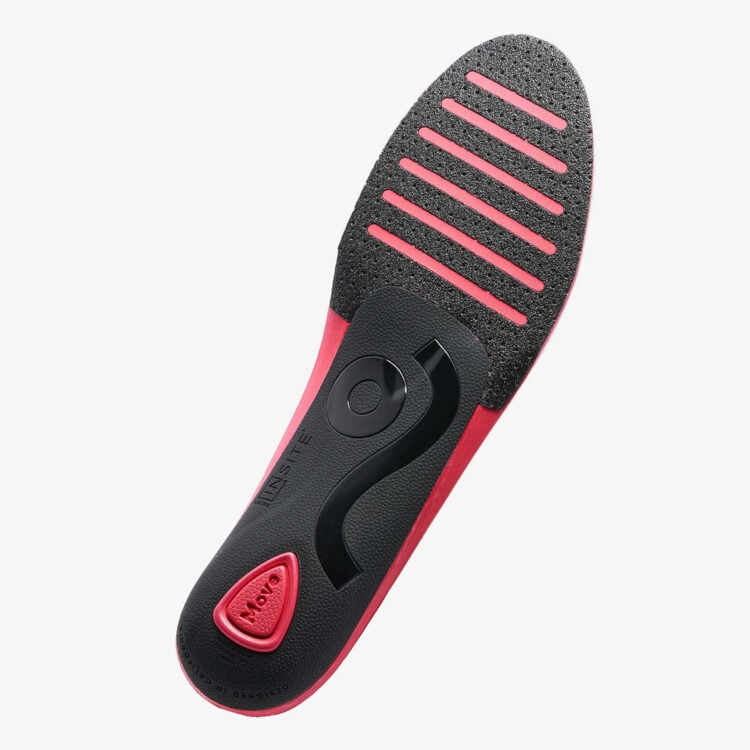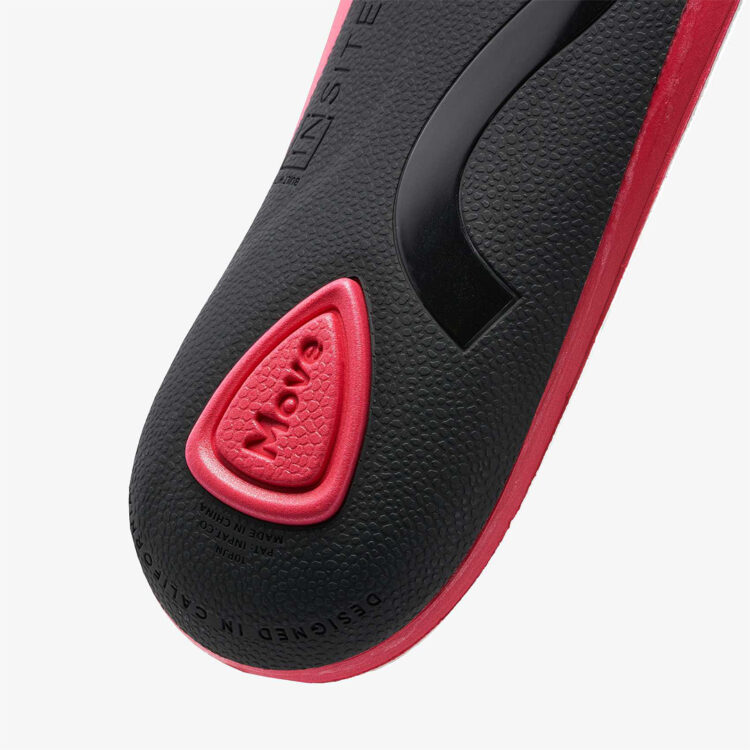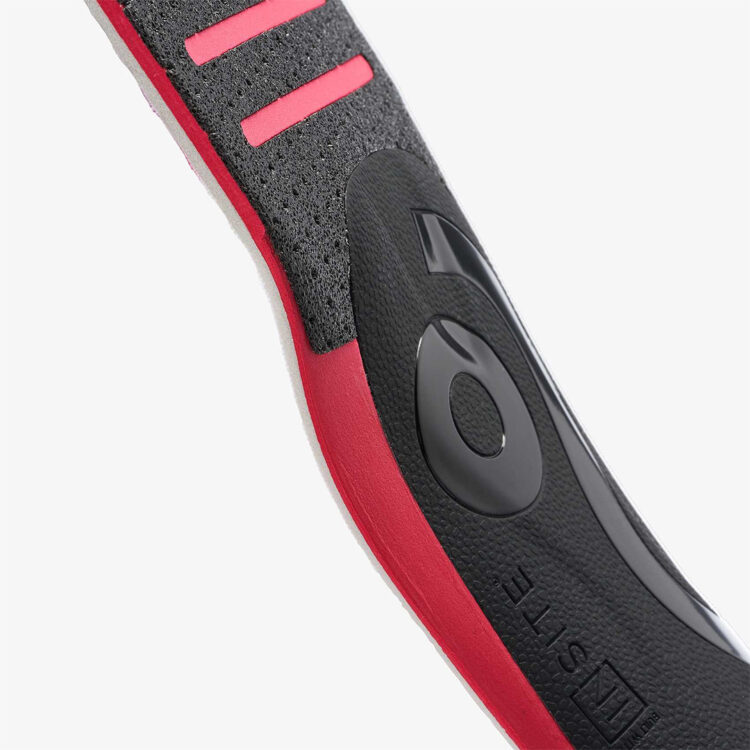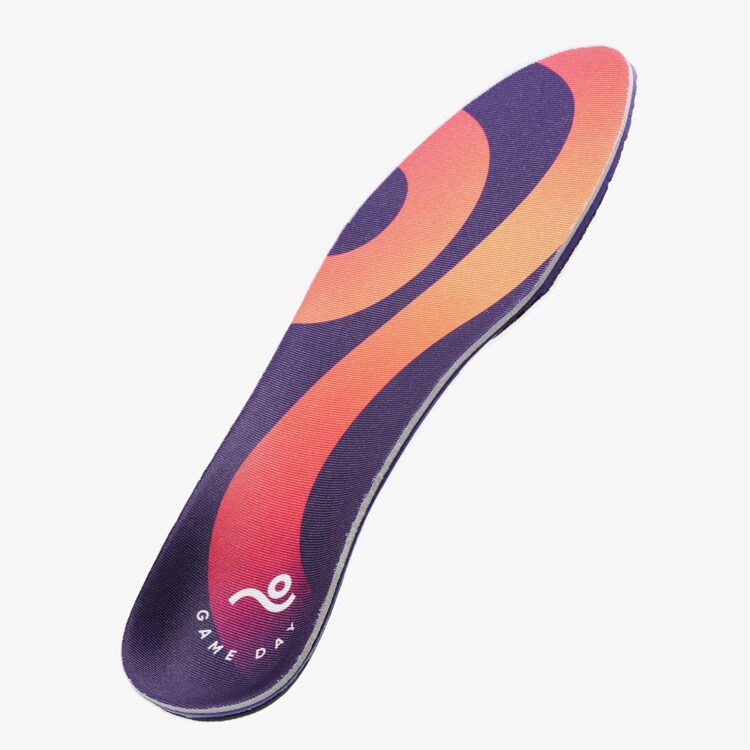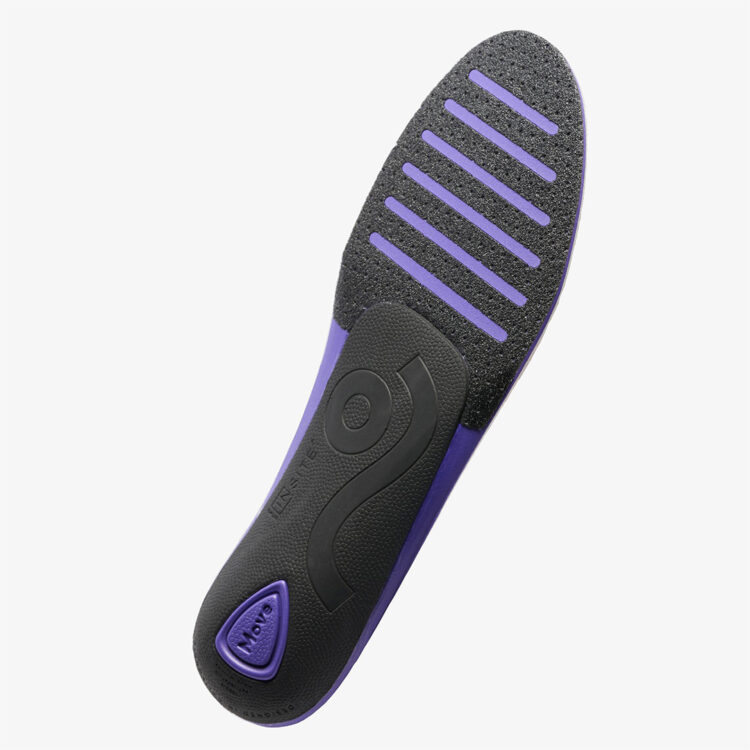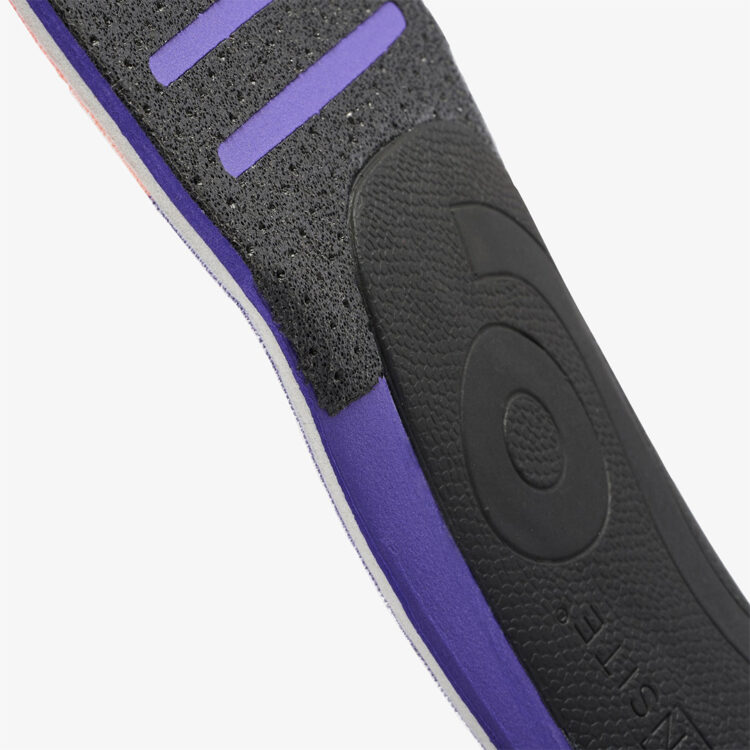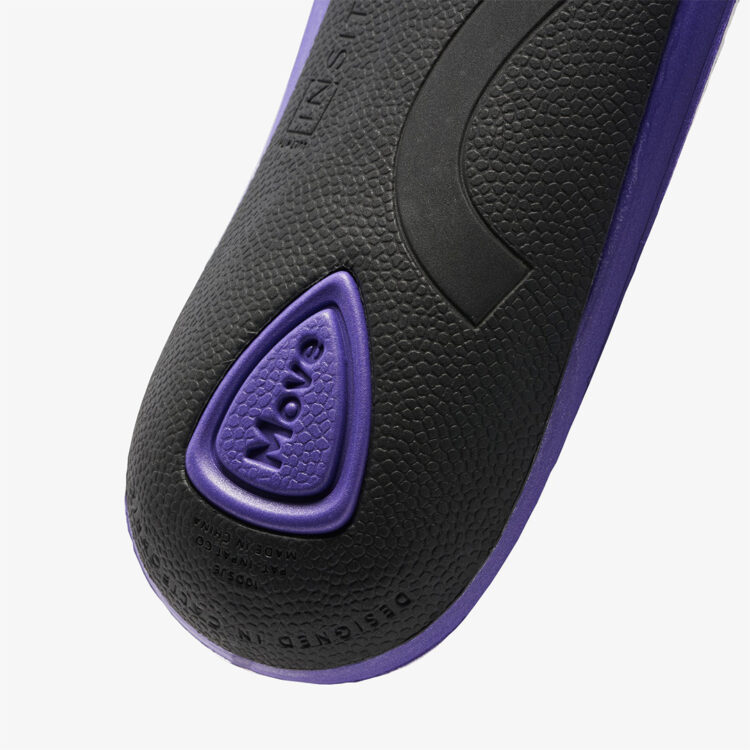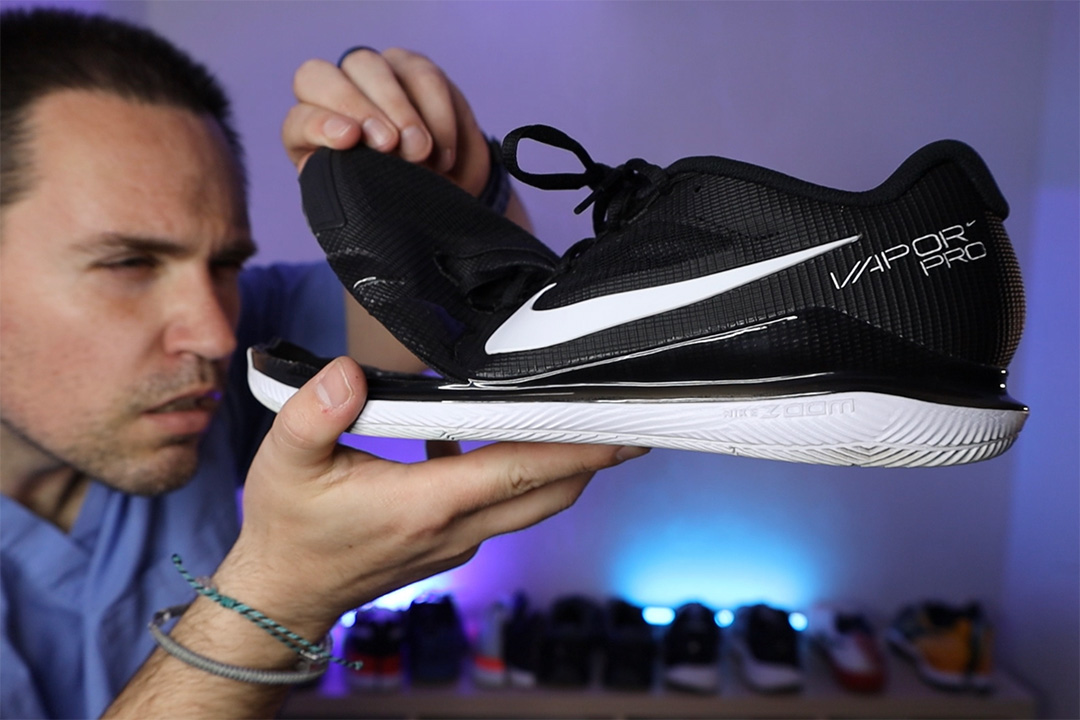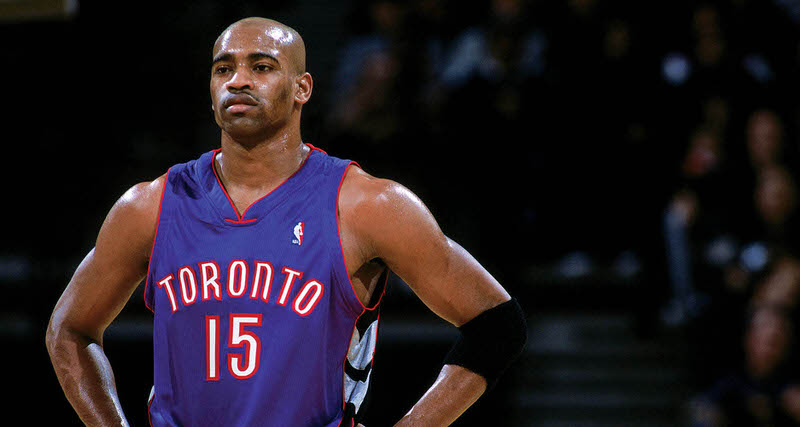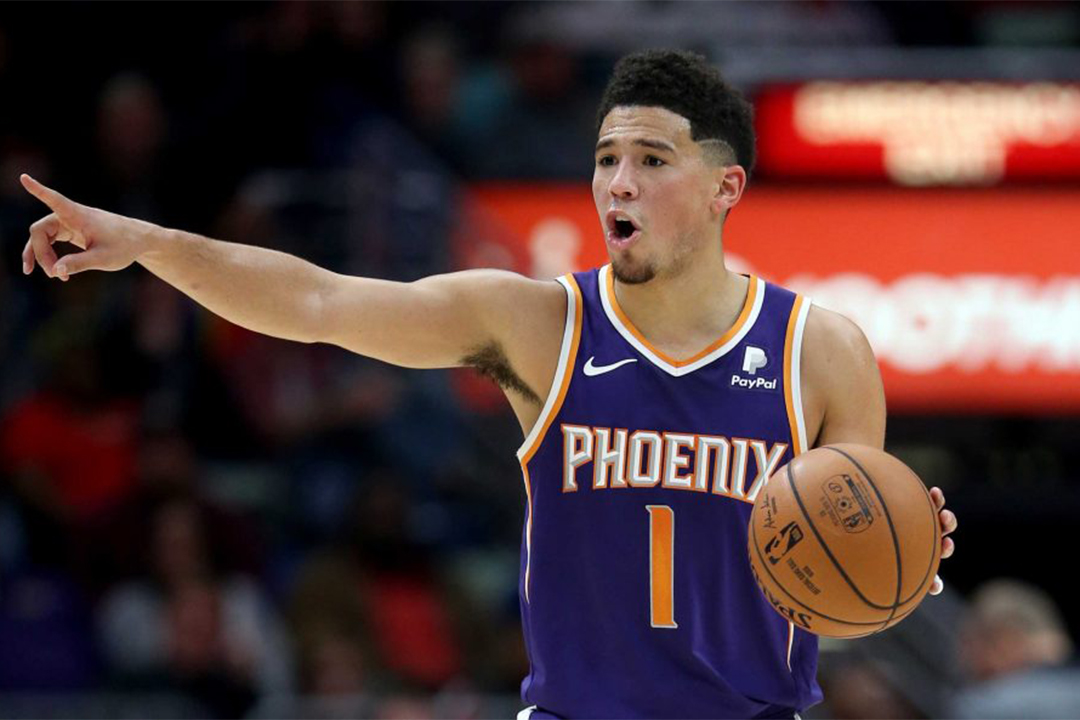This post may contain affiliate links. Please read our disclosure policy.
If you’re on #NBATwitter, the name @JonesOnTheNBA should be a familiar one. For those unfamiliar, Nate Jones isn’t just a hoop junkie but works in the industry, most famously as the agent of some guy named Damian Lillard. And with Dame, Nate founded Move Insoles, a performance insole brand backed by NBA and former NBA players such as Chris Paul, Jamal Crawford, Matisse Thybulle, and Anthony Tolliver, and we got to chat with Nate on his latest venture and how Move started.
This interview has been edited and condensed for clarity.
NK: So what prompted you to start Move Insoles? Where did the idea and motivation come from?
NJ: Man, honestly, it’s a convergence of a lot of different things. First of all, I’ve been working as an NBA agent focused on the off-the-court business for NBA players for 14 seasons. I’ve been working for a firm, Goodwin Sports, started by Aaron and Eric Goodwin, who have been in the game for 30 years. They have repped everyone from LeBron James, Kevin Durant, Dwight Howard, Gary Payton, Jason Kidd, and more. They’re really known for the gigantic deals that they’ve done and some of the innovative marketing they’ve done around sneakers.
They did LeBron’s first deal with Nike. Kevin Durant’s first deal with Nike. Dwight Howard’s deal with Adidas. All of the Fun Police stuff that had Damon Stoudamire and Gary Payton, all those guys in it. They represented all of them. Having the opportunity to learn from them over this time has put me in a position to go after what I’m doing now.
This idea popped up because I’ve been playing basketball my entire life. But a few years ago, right after I got married, I started to try to rev up playing basketball again and I actually had a plantar fasciitis issue. It was to the point where it was painful to walk. So, you know, it was just one of those things where I was trying to figure out how to get rid of it. And through our clients, I’ve had experiences where guys have missed weeks at a time with plantar fasciitis. So this was the time where I finally understood like, damn, this is why some of the players have to sit games with this.
Someone actually suggested I go to CVS and get a Dr. Scholl’s insole. I was honestly kind of skeptical about it. When I went to pick it up, the first thing I thought was like, damn, it’s Dr. Scholl’s. The main thing that you think about when you think about Dr. Scholl’s is that you’re basically telling the world that you’re washed. I was like, damn, I don’t want anybody to see me with this!
I had gotten married in December 2018 and I packed them for our honeymoon in Asia in March 2020. In the last part of our trip, we went to Tokyo and we were walking around a ton. So I pulled them out and I put them in my shoes and the pain started to subside. So I was just like, OK, damn, maybe this does work a little bit.
And it kind of makes sense because I started thinking about our players that we work with and how the majority of them have modified sneakers. They don’t wear their shoes out of the box. A lot of times they have “athlete services” shoes. And then on top of that, they often have additional modifications with insoles or custom orthotics.
I was like, wait a minute, I’ve been playing basketball my entire life. I’ve been marketing to this demographic that loves basketball, loves basketball sneakers, all of that my entire adult life, and I can’t ever remember going down like a consumer journey.
When my agency is in footwear meetings with Foot Locker, Dick’s, etc., they’re not saying, “we’re going to sell them an insole too, or we’re going to try to replicate exactly what the pros do.” So there was an obvious white space to fill.
I also started thinking about what was happening in grassroots basketball, the AAU space. I don’t know if you read this article by Baxter Holmes at ESPN about the proliferation of injuries at the NBA level and how a lot of it was being tracked back to the amount of hours at the AAU level.
NK: I do remember that piece
NJ: So it just made me think, so many people are going to say, “Oh, they need to stop playing so many games, they need to do whatever.” But, you know that’s not going to happen.
So what can we do to make it so players are not having these issues? Well, it’s educating them in terms of how they should train and prepare their bodies and providing pro-level products that allow them to protect their bodies.
So that’s kind of like the foundation of everything; me having my own issues, me seeing that the best NBA players in the world already do this…and why isn’t that a known thing by all the amateur and recreational athletes out there?
I was thinking about the stuff that I told you about AAU and the injury issues, overuse issues and how that needed to be addressed…and then just looking at the market as a whole. Dr. Scholl’s is this old, sleepy brand that kind of had its peak with the boomer generation. What you’ve seen with a lot of boomer brands is they have a cash cow because there’s so many boomers that they don’t need to go and address anybody younger. Dr. Scholls or their parent company would have to create a new brand to try to go after this market. It would require spending a lot of money, which, you know, old sleepy brands don’t tend to want to do, right? So that’s kind of how it all came to be.
This is a $3 billion a year business globally, and I don’t think it attacks the youth demo much at all. So can we take a piece of the business that’s already there and expand it to this new generation of athletes that are more concerned about taking care of their bodies and having knowledge about their bodies and performance and all of that than ever before.
NK: Just want to go into what the research process was like and what went into user testing because it’s always just been something fascinating when someone who doesn’t really have a background or have any history within an industry and how they get a product out, that’s not just things like tour merch.
NJ: So the crazy thing is a lot of my job is working in the footwear industry, but not as an actual producer of product. I represent athletes that are signed to these particular brands, so I get to see the process of their signature shoes being developed from start to finish, giving feedback on merchandising, all of that stuff.
We never talked about insoles with those companies, but I did have connections in the industry and I utilized those connections in order to meet with different partners that I thought could help us get this off the ground.
One of the businesses that I admire a ton with what they were able to build is Beats by Dre. I don’t know if you know the story of their first products, but when they started, Jimmy and Dre had the idea for creating headphones for a younger generation and using all their marketing power to take over that segment. They didn’t know how to build headphones themselves. They ended up partnering with this company, Monster, which provided all the tech and audio data and expertise and stuff for the initial products. And you know, most consumers don’t remember that there used to be a monster logo on the boxes. And that’s how they took off.
So we were always looking to replicate that model. What’s the Monster Audio to our Beats by Dre? We had meetings with several people in the footwear industry that had consulted or helped manufacture or partnered with a lot of different upstart insole brands.
One of the companies that we wanted to really focus on was this company called Footcare Express. The reason we were interested in focusing on them is because we found out that they were the preeminent custom orthotics and podiatry-like firm for pro sports. So all of you know, the NBA, NFL, a lot of high-level Division 1 across the board. They’re the ones providing custom orthotics for athletes that need custom level servicing.
So the idea was we can go to them and they probably have knowledge of how to develop this product. Of course that was 100 percent the case. FCX worked with the best athletes in the world and they had data from 150,000 foot scans. They actually had been working on an idea similar to ours already, but they realized that they didn’t have the money and marketing chops to do this completely on their own. So it was like an instance of right place, right time. We came in there with the backing of some of the best athletes in the world, knowledge of how to navigate the industry, and the marketing and design chops to revamp the product and packaging. So that’s kind of how it came together
NK: You kind of delved into it before, but what was your experience with performance insoles before starting Move? What are some things that you’ve observed and learned from the insole industry as a whole and that you want to improve on?
NJ: The main thing that I would say in footwear in general, the sock liner that comes in your shoe is completely inadequate. Our insoles aren’t going to fix bricks, but if you have something that’s a good or great shoe, like the KD 14 (which I think it’s amazing)…I like the shoe, but with the stock sock liner, it makes the full length zoom bag feel a little unstable. It’s definitely responsive, but you feel like you’re almost on a moon bounce. Then you put our insole in it, and it’s mind-blowing, and takes it to another level. And it makes sense because the sock liners that come standard with shoes are inadequate. A lot of times they’re 10 cents to 50 cents to produce.
Some of the people that we consulted with from the sneaker industry, that were designers and things of that nature, were frustrated because a lot of times they would build out these highly evolved insole systems…but every time they would do that, the brands would make a decision to not bring the shoe to market with the high quality insole. This is because brands usually try to save margin by selling their shoes with cheaper sock liners.
At the end of the day, sneaker companies are performance companies, meaning they have to create product that performs for athletes. But the most important thing for selling a shoe is the fashion aspect of the shoe. If it’s ugly or people don’t like it, or people don’t take to it for a variety of reasons aesthetically, they’re not going to purchase it. So if they’re trying to work on the economics and margin and things like that, the first thing that’s going to come out is that sock liner. The sock liners that do make it to most shoes are flimsy and don’t do anything for you. That was our number one thing…improving that.
The way the business operates now is completely inadequate for the average athlete because you can see what the pros do already. The pros already know and they swear by insoles and orthotics. Like they don’t play in their shoes out of the box for those reasons. Their pro athletic trainers don’t let them play without their insoles and orthotics for those reasons. Many times, the first thing that happens when players visit their team’s facilities after getting drafted is they come and they get their feet scanned. The trainers often end up either putting them in custom orthotics or a high-level insole to replace the inadequate sock liner that they have in their shoes.
And in the established over-the-counter insole business, what I learned from that is there is no actual data behind what many of these brands are doing. You know how it is with manufacturing; there’s one factory that does everything for everyone, and everyone kind of copying the same thing, revamping it a little bit. And these products are not necessarily fully podiatry driven. There is no podiatry by biomechanic DNA in it.
We had a customer tell us “I can tell that you thought about what a basketball insole should be like for a basketball player because I buy other brands of performance insoles, and they slip in my shoes, so I have to glue them down. But yours has a piece on the forefoot that makes sure that there is no slippage of the insole once you have it placed in the shoe.” So there’s just thoughts about that and actually bringing the quality product to the market and making it a reasonable price.
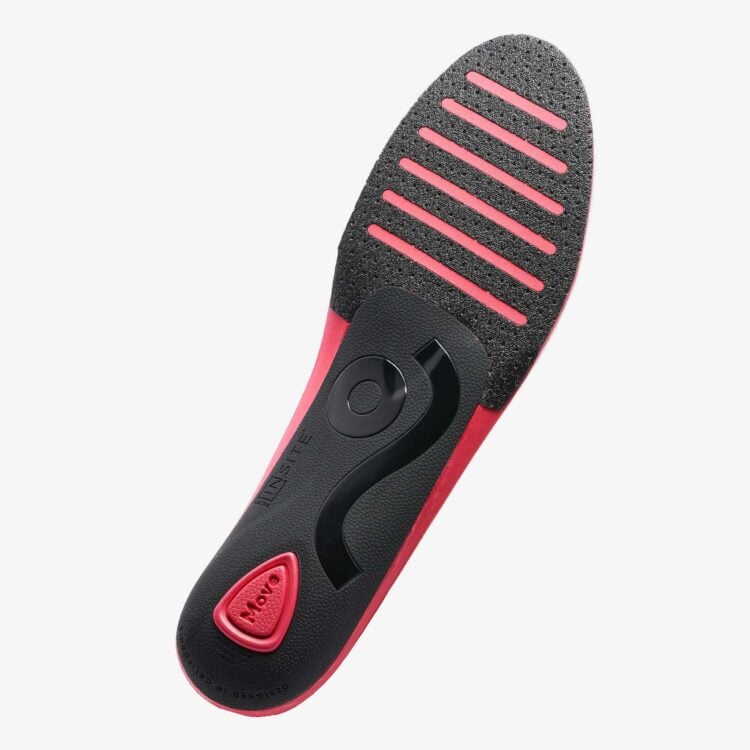
Move insoles come with forefoot grip to prevent slippage
There are some brands out there that make claims about making you jump higher and they’re charging crazy amounts of money. $100-$200 plus for non-custom insoles and orthotics is kind of outrageous to me, so I just wanted to bring something that was true to the game and could actually help athletes in the market.
NK: And as far as this whole journey, and like what is the most fascinating part that you learned about your feet, footwear, and the whole journey of starting Move as a whole?
NJ: The most fascinating part is we have a bunch of athlete ambassadors and investors. One of them is Chris Paul. He put money in the company and he’s super excited because he believes in what we’re doing. But just getting the reaction from these athletes that’s like, “Oh, someone really is digging into how it is for us”. Chris is someone that has a son that’s in middle school playing basketball now, and he’s trying to educate him on how to take care of his body in ways that Chris didn’t know about while he was playing ball growing up in North Carolina.
Now, he’s had all this access to knowledge, and we came to the table with a product that he could market and bring to the masses of kids that are influenced by him and the next generation of athletes. So what’s been the most fun is seeing how much we hit the nail on the head with what athletes care about and how much they want to bring this information down to the next generation.
Move has two insoles, the Game Day and the Game Day Pro with both using a dual foam system for in-step comfort, X-Frame torsional support, and Insite Patented Shape which gives custom-like benefits to 85% of wearers. The Game Day Pro adds a Carbon-like torsional plate for extra support and rigidity. You can purchase the insoles at move.one with the Game Day insole retailing at $39.99 and the Game Day Pro retailing at $59.99. Thank you again to Nate Jones for taking time out of his day to chat with us.
